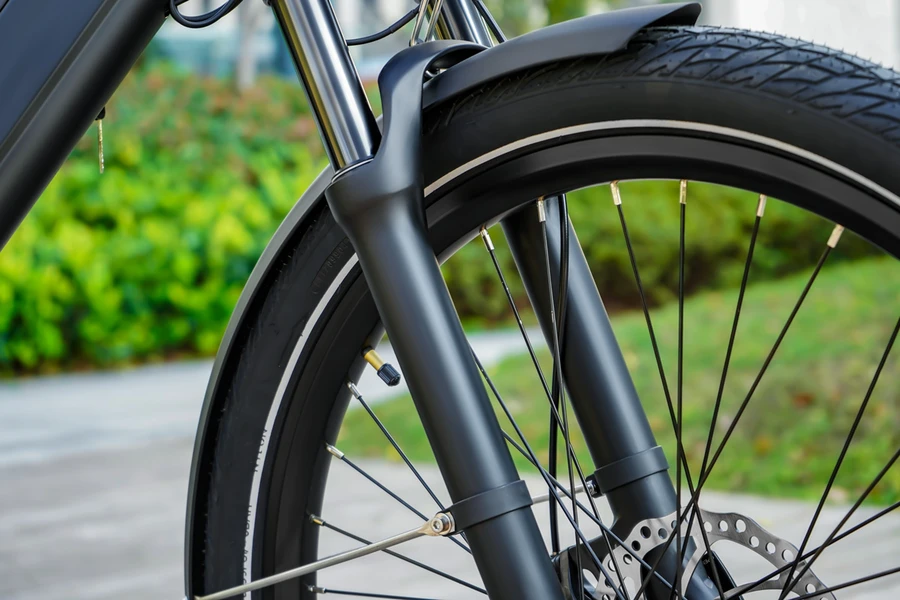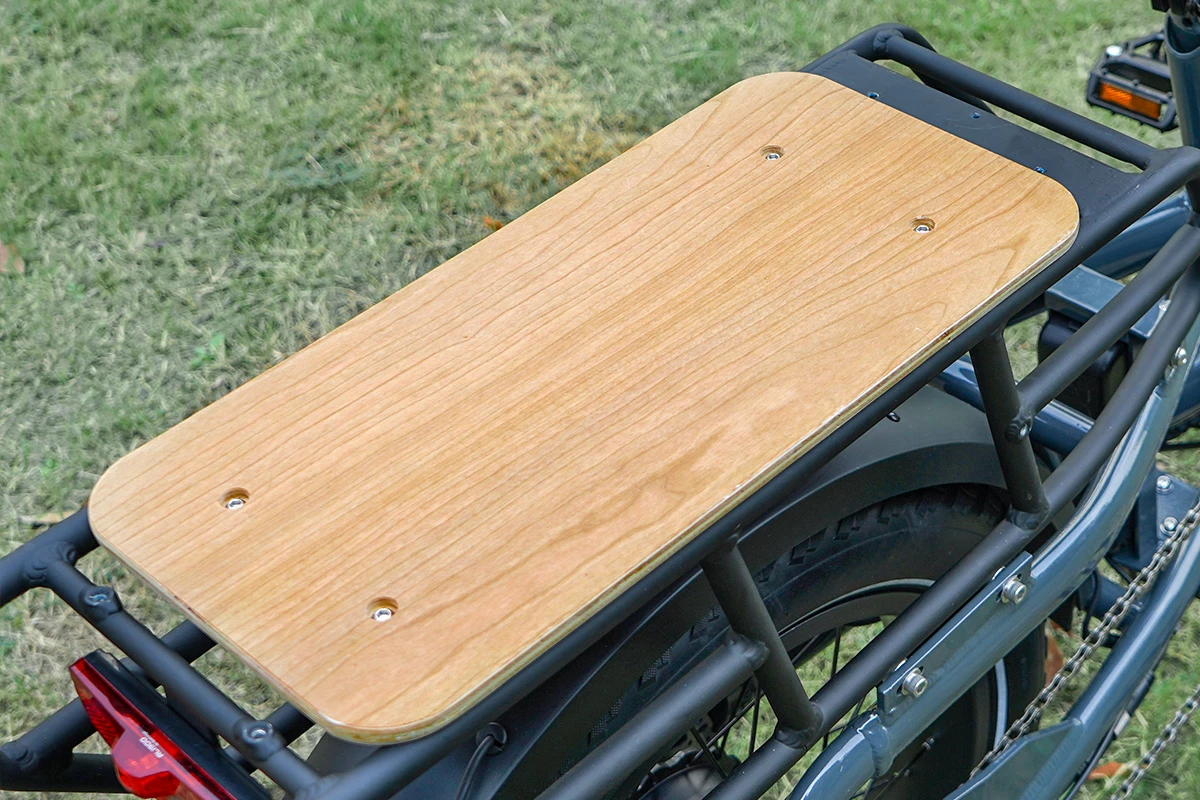Do Bicycles Have A Weight Limit? 丨KBO Bike
Bicycles are currently more advanced than they have ever been. Bikes come in various designs to accommodate the wide range of rider sizes and heights. Thanks to continual improvements in engineering and materials research. This is especially important for large-sized cyclists, who have historically been ignored in the cycling community — though this hasn't prevented them from riding. Indeed, many plus-sized cyclists have taken the risk and rode whatever bike was available, oblivious to any limited weight capacity.

Similarly, youngsters seldom hesitate to ride double with friends, and riders with racks are typically unafraid to take on a big load. Bicycles are strong that we assume they can withstand more weight than we can readily apply. It raises the question of whether bicycles have a weight restriction. The short answer is yes. However, the exact limit varies based on several factors. A traditional bike's weight limit is between 250 and 300 pounds, with load capacity dictated by its wheel size, tires, weight distribution, material components, and design.
We will go over them in-depth later in this comprehensive guide, ensuring your safety and pointing you on the correct path to help you choose the ideal bike for yourself.
Bicycles And Their Weight Limit
Bicycles are among the clearest instances of beauty meeting functionality. Individual elements may appear sophisticated, but the foundation of any bike is its frame design, materials, and design.
This information, together with the size of the wheels and kind of tires, can tell you what style of riding the bike is for.
The same features offer you an indication of what a bike's weight limit will be. An electric bike with wheels smaller than 26" is almost definitely intended for youngsters.
Because children's bikes are usually constructed using less expensive materials, the frame is most likely composed of high tensile steel. Its maximum weight capacity is safe to estimate at 85-125 lbs.
Proceed to a bike with 26" rims and big, knobby tires. It sports a steel or aluminum alloy frame with a tall seat tube and hard-tail front fork suspension.
That has all the characteristics of a mountain bike. Because of their sturdy construction, these bikes can carry weights weighing between 225 and 300 pounds on average.
There are also road bikes, which are as slim as antelopes and engineered for speed and lightness.
Their big, thin 29-inch wheels and narrow frame tubing made of carbon fiber or titanium alloy may propel you quickly across flat, paved areas — but only if you and your cargo weigh less than 220 pounds.
This union of load and capacity can make it simple to estimate what would otherwise be a difficult piece of information. However, they are merely broad estimations. It is feasible to create more personalized expectations when analyzing the components that influence a bike's maximum weight capacity.

Weight Limiting Factors for Bicycles
The maximum weight capacity of an electric bike is influenced by all of its structural components. This is apparent when it comes to the frame and wheels, but the seat and handlebars also have a significant influence. Consider the following criteria while attempting to estimate what loads a bike can withstand.
The Wheels
When it comes to how much a bike can carry, the wheels are usually often the first point of failure. They are constantly stressed, and if they are hit, such as while going off a curb, the pressure can be enough to distort the rims.
Wheels with a greater diameter, and those constructed of more fragile materials are more vulnerable. Heavyweights are supported by smaller aluminum or steel alloy rims with at least 32 stainless steel spokes.
The Tires
Thin tires are unsuitable for carrying weight. On contact, they compress more readily, resulting in rim damage, burping, flats, and blowouts.
Fat tire bikes offer additional cushioning, while the extra width distributes weight more evenly. To withstand heavier loads, tires must be pumped to their maximum PSI range.
The Frame
The materials used to construct a frame have their inherent stress limits. Steel and steel alloys are the most durable, and electric bikes designed for larger riders or electric cargo bikes would typically use this metal. Aluminum is a close second, and both may be utilized in most cases.
Carbon fiber and titanium bikes are typically designed with weight as the primary consideration. They are durable materials, but because of their sparse design, frames built of them are more fragile under heavyweight.
Suspension
If you select a mountain bike, you'll almost certainly have a suspension frame or at the very least a suspension fork. The goal, like in other vehicles, is to absorb impacts to produce a smoother ride.
The issue is that bicycle suspensions are virtually never strong enough to support a hefty rider. That implies that every bump on the road will cause your bike to drop hard on the suspension, making for an unpleasant and perhaps dangerous ride.
Rigid suspension is the ideal option, although locking the fork may be just as effective.

Seat and Handlebars
Both of them function as your points of contact with the bike, and both may enhance comfort and weight capability by distributing the pounds more evenly.
Simply by being broader, they achieve this. They are significantly more difficult for bigger riders to use comfortably due to their narrowness, and the concentration of weight along the bike's center places additional pressure on all parts.
How Much Weight Can A Bike Safely Support?
Knowing which factors influence a bicycle's carrying capacity allows you to make informed judgments about what is safe.
As previously stated, it is fairly unusual for riders to put their bicycles to loads that exceed the manufacturer's recommendations. Most of the time, there is no instant negative repercussion.
However, if the manufacturer of the bike has specified a weight limit, weights beyond that limit are considered hazardous.
This is because a printed weight maximum is almost certainly the product of rigorous testing of that specific model. That data is superior to any average.
However, there are occasions when the only statistics we have are averages. So, if you have a mountain bike, the maximum weight capacity is 300 lbs. If the frame is carbon fiber or the wheels are larger than 26", reduce the weight by 20 pounds.
Similarly, a reasonable guess for road bikes is 220 pounds, although that may be increased to 250 lbs if the frame is steel or aluminum, or if the tires are fat and the handlebars are broad - then at this point, you're talking about a hybrid bike.

Why Do Some Bicycles Have A Greater Weight Cap Than Others?
This question brings us back to the topic of form and function. Bicycles are designed to fulfill specific purposes. Yes, they are all designed to be ridden, but not in the same way.
Mountain bikes have more weight restrictions since they are designed to handle the demands of off-road riding. The stress of downhill collisions at high speeds creates forces similar to those exerted by a larger rider under less severe conditions.
Because mountain bikes must withstand such pressures, they are built to carry more weight. Meanwhile, road bikes are designed with comfort and speed in mind.
Their design capitalizes on the relatively simple roads their riders use, to be as light as possible to decrease the strain of climbing hills or navigating over long distances. Their bigger tires are superior for producing speeds while using less energy.
There are also various types of bikes, such as recumbent bikes, which place the user lower with their legs completely extended. Because of the change in weight distribution, these bikes have a greater maximum load tolerance.
It should not surprise you that the tandem bike, with a weight capacity of 500 pounds, can carry the most weight. After all, it is built for several people to ride at the same time. Therefore it must be reinforced to ensure safety.
Fortunately, bike manufacturers are paying more attention to the demands of plus-sized riders, creating models that represent a new wave of bikes.
Instead of being a consequence of its function, their unique role is to bear the maximum weight comfortably and effectively.
Identifying the Bicycle Weight Limit
The manufacturer is the best place to find out what your bike's weight restriction is. Examine the paperwork that comes with your bike. If you can't locate it there, go to the manufacturer's website.
So, what if none of those alternatives provide a result?
How can you see for yourself what your bike is capable of?
There is no standardized method. But there are several stress areas you may check to see whether your weight is too heavy for your bike.
If your weight, or the combined weight of you and any essential gear, exceeds the estimate by 10 lbs or more, your best choice is to just trade-in for a new bike that can take the extra weight.
Find a flat, somewhat smooth road and ride a short distance over simple terrain to put your bike through its paces. Keep the following in mind throughout and after your ride:
Do you notice the rims rubbing against the ground? Stop immediately and inflate them to their maximum allowable PSI. If it doesn't work, the bike won't support your weight (with those tires).
Are your rims squeaking? Examine them to check whether they are malformed in any way. If any of the spokes are twisted or broken, you have exceeded the safe weight limit.
Has the seat shifted? The seat post is a typical site of failure when there is too much weight on it. You should not ride the bike if you see any damage to the seat or the post.
What was the suspension's behavior like? This is only applicable if you have a suspension that cannot be locked in place. If your weight compresses the fork significantly even on flat ground, you've surpassed the safe weight tolerance.
At KBO, our bikes are made with lightweight and durable alloys to allow more load. Bicycle weight limits are to ensure the maximum safety of the ride. Do ensure to comply with the limits set.

















































